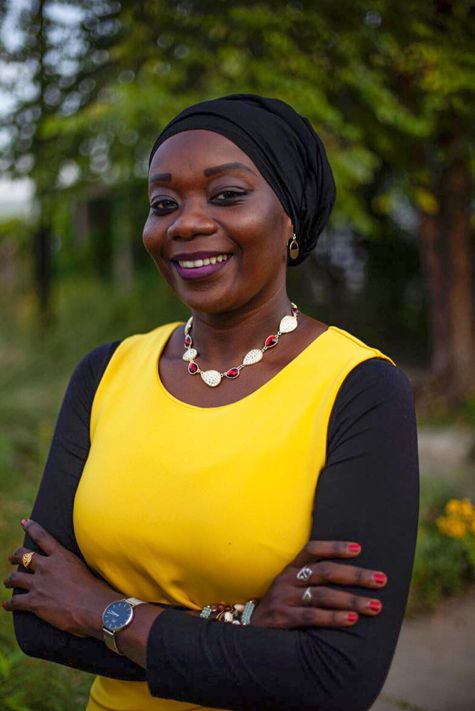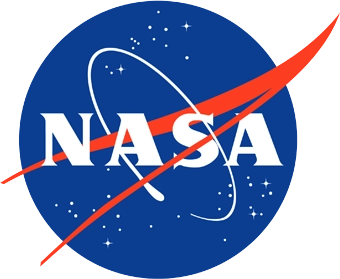Early Career Scientist Spotlight
Dr. Fadji Maina (she/her/hers)
Hydrologist
Hydrological Sciences Laboratory (617)
Did you always know that you wanted to be a hydrologist?
I didn’t always know I wanted to be a hydrologist but my experiences during my upbringing led me to this field of interest. I was born and raised in Zinder, Niger (in West Africa). I left Zinder when I was 16 after graduating from high school because back then, in 2008, the nearest university was around 600 miles away in the capital city of Niger, Niamey. Zinder is a city with legendary water scarcity issues. Up until 1926, the city was the capital of the French colony of Niger, then the capital was moved to Niamey partly because of Zinder's water scarcity and droughts. Consequently, Zinder, a crossroad of the trans-Saharan trade lost its political and economic power. Intense and recurrent droughts and desertification have made water a luxury. Many households do not have running water and the wells are frequently dry because of recurrent droughts. Women and girls are responsible for providing water for the entire household, they walk many miles every day despite the hot weather to fetch water. As a result, water scarcity in Zinder increases the lack of women and girls education and other societal issues. Growing up in this environment taught me the importance of water and sparked my interest in hydrology.
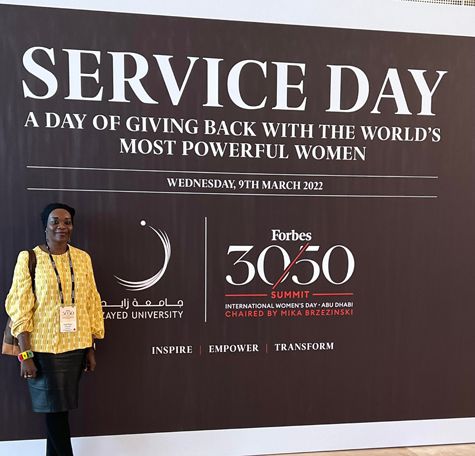
Credit: Fadji Maina
Tell us about the research projects you are currently working on.
I currently work on the NASA High Mountain Asia project. I am part of a team led by Dr. Sujay Kumar. Our work focuses on understanding the changes in water budget using remotely sensed data and hydrologic models over the past three decades in High Mountain Asia and their causes. High Mountain Asia includes the Tibetan plateau and its surrounding areas which include countries such as China, Myanmar, Bhutan, Nepal, Bangladesh, India, Pakistan, Afghanistan, and Kyrgyzstan and is home to more than a billion people. The region hosts the largest reservoirs of fresh water outside the polar zones. High Mountain Asia is experiencing warming at a rate that is double the global average and this area is subjected to intense human activities (e.g., irrigation and pumping). The changes in climate (i.e., the natural system) and human activities (e.g., irrigation and pumping) all contribute to changing the terrestrial water cycle. Quantifying these changes and understanding their drivers are essential for a better management of water resource in the region. In this project, we rely on NASA earth observations satellites such as the Moderate Resolution Imaging Spectroradiometer (MODIS), the Gravity Recovery And Climate Experiment (GRACE), and the Global Precipitation Measurement (GPM) and the NASA Land Information System to understand these changes.
Our work has led to a better understanding of the drivers of greening (i.e., increase in vegetation in the region). High Mountain Asia has one of the highest rates of greening in the world which is mainly attributed to human activities such as irrigation. Our research has also demonstrated that this observed greening is impacting the surface radiation (as quantified by the changes in surface albedo) and the energy balance at the land surface and hence the climate systems. In other areas of the region, warming enhances greening and decreases the surface albedo which in turn accelerate warming. The change in precipitation phase induced by warming along with the increase in precipitation stemming from a changing climate also exacerbates greening and impacts the energy balance. Moreover, recently, we have demonstrated that the change in precipitation phase causes rain-on-snow events in High Mountain Asia which have strong implications for landslides, floods, droughts, and could likely enhance pumping and other human activities in the region. Our research disentangles the contributions of humans and the changing climate to the observed changes in water budgets in High Mountain Asia.
I also work on another project under the leadership of Dr. Sujay Kumar that aims to improve the representation of groundwater in land surface models within the NASA Land Information System. This is essential to better represent the changes in groundwater dynamics because groundwater dynamics strongly impact and are in turn affected by the land surface processes and the climate dynamics. As discussed previously, pumping (i.e., overuse of groundwater) and irrigation in High Mountain Asia induces greening and impacts the climate systems.
We also improve the datasets that we use. These data are embedded with many uncertainties which propagate and impact our results and one of the main sources of uncertainties in hydrologic modeling is the precipitation, which is very difficult to estimate accurately. While there are many precipitation datasets in the literature, most of the time these data are not consistent; they provide different results, and they produce different spatiotemporal resolutions. So, I am also involved in another project that focuses on improving precipitation estimates by assimilating and/or combining multiple precipitation datasets derived from re-analyses or remote sensing products.
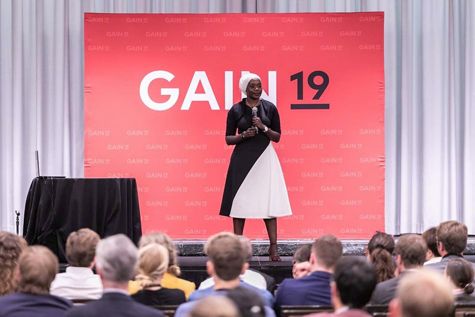
Credit: GAIN
What aspect of your work excites you the most?
Studying the complexities of the Earth’s natural systems is most exciting to me. I really enjoy thinking about different ways to unravel some of these complexities. The water cycle is like a puzzle – it may take time to get the right pieces and put them together, but once it is done, it is beautiful to see how the story unfolds and comes together. It is fascinating to understand how a tiny piece of Mother Nature works and how human beings are altering the natural systems.
If you were to expand your current research focus, what new topic would you explore?
We still need more reliable and accurate data to better understand the water cycle especially when studying the impacts of human activities on this cycle. While hydrologic data could be difficult to measure and obtain, there are other non-hydrologic (even unconventional) data that could easily be obtained, and we can use them to better represent the water cycle. Since everything is interconnected on Earth, to some extent, most of the state variables (including human behaviors) that we can see and/or measure contain information about the water cycle and/or depend on the water cycle. I would like to combine and mix many types of data using artificial intelligence to represent the water cycle.

Credit: Fadji Maina
What advice would you give your younger self?
“Sometimes the place you are used to is not the place you belong. You belong where you believe you belong.” This is a quote from “Queen of Katwe”, a book by Tim Crothers and also a Disney film, narrating the story of a young Ugandan girl Phiona Mutesi, a chess prodigy, who overcame many stereotypes and broke a lot of barriers to become a woman candidate master after her victories at World Chess Olympiads.
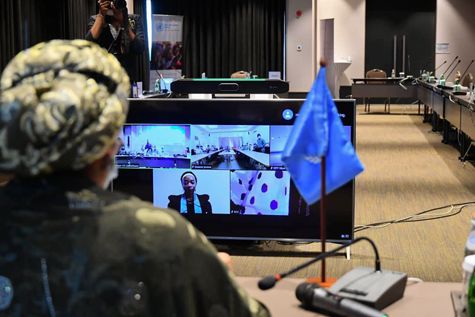
Credit: Daniel Getachew
Who inspires you?
Many people inspire me! I let myself be inspired by whoever I meet or have a discussion with because I believe every single human being is somehow doing their best every day to achieve something great. The people that inspire me the most are Nigerien women. They are so keen to make the lives of the future generation better. They don’t even live with a bare minimum, yet they make sacrifices not only to improve the lives of their children but all their entourage. They strongly believe that “If one of us is unwell, then none of us is well”. Their altruism and selflessness always inspire me. And of course, among these women my mom is my biggest inspiration, she is one of a handful of Nigeriens of her generation to receive a graduate degree from a western university. She is a strong advocate for girls’ education and women empowerment in a country where, in 2022, only around 8% girls make it to middle school. She instills the love of hard work in us, and she always tells us “it is better to work for your rival than doing nothing”.
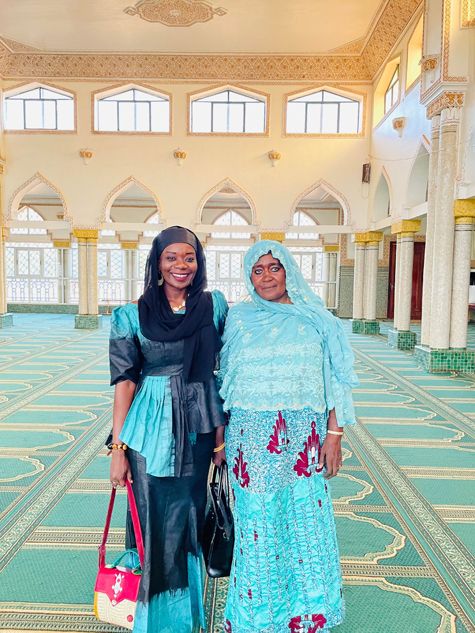
Credit: Fadji Maina
What do you like to do in your free time?
I enjoy reading autobiographies and books about history, economy, and other fields in science. I like traveling to discover new cultures and environments and to meet new people and of course, to take a lot of pictures.
In my free time or in vacation, I organize outreach activities either remotely or in-person to inspire young Nigeriens to pursue scientific careers. Most of young Nigeriens are not exposed to science and don’t have opportunities to engage with scientists. I must give back to the community that raised me. As the African proverb said, “it takes a village to raise a child”.
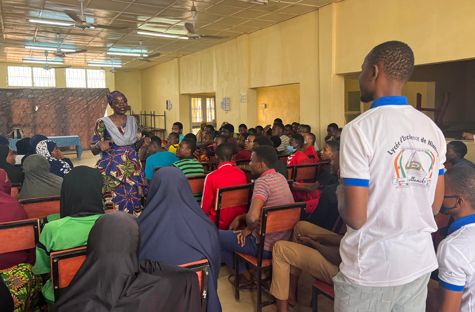
Credit: Fadji Maina
Biography
Home Town:
Zinder, Niger
Undergraduate Degree:
B.S. in Geological Engineering, University of Fes, Morocco
Post-graduate Degrees:
M.S. in Environmental Engineering, University of Strasbourg, France
Ph.D. in Hydrology, University of Strasbourg, France
